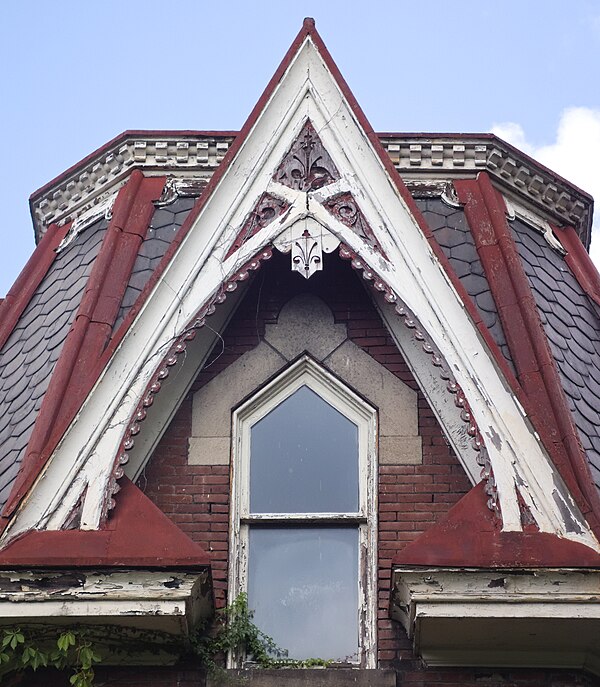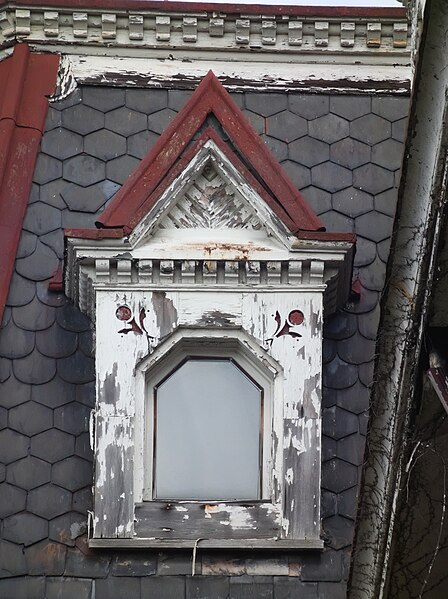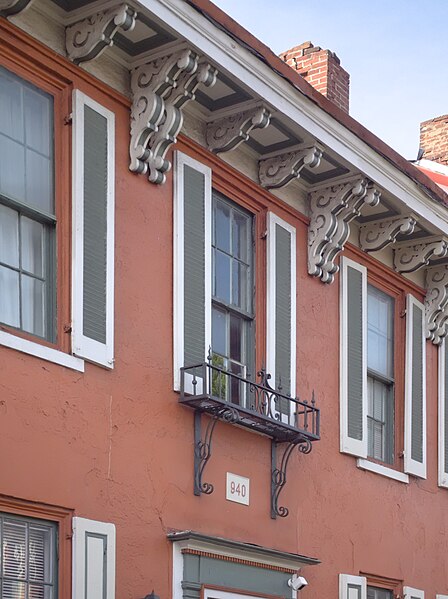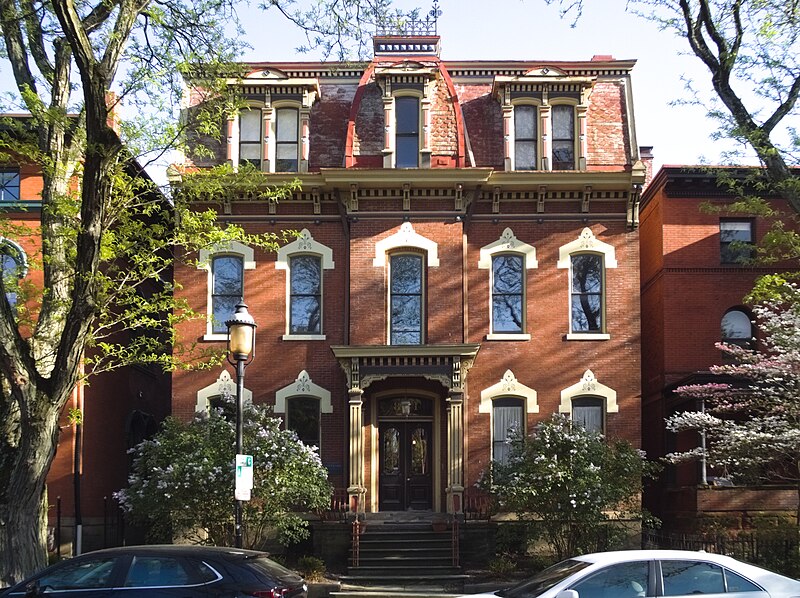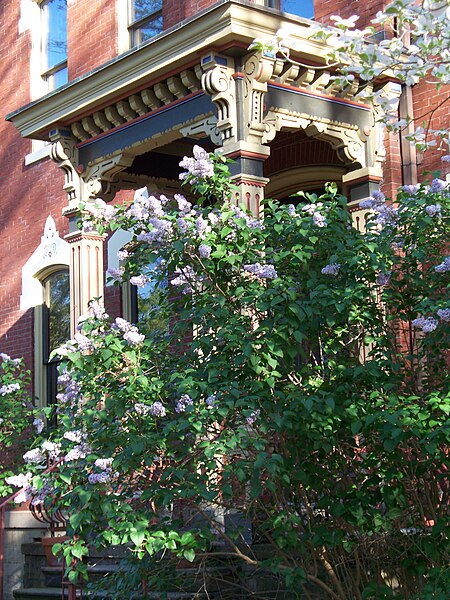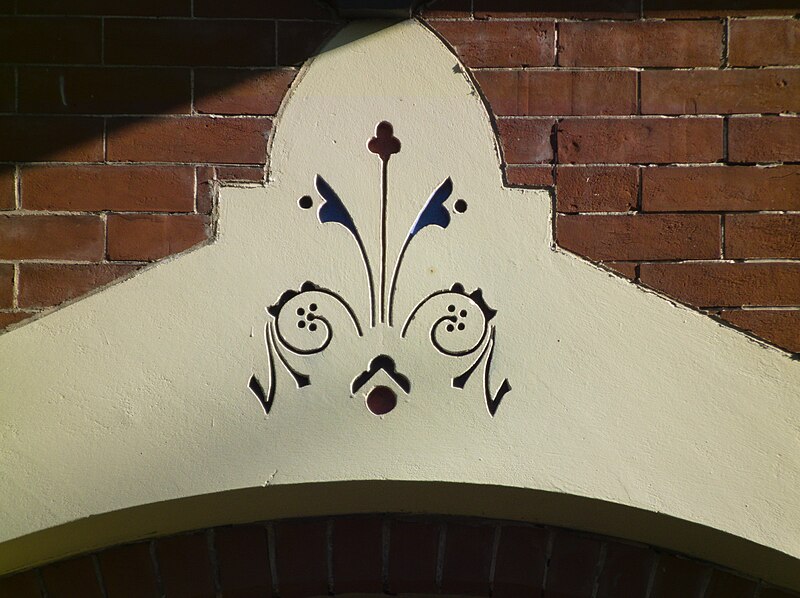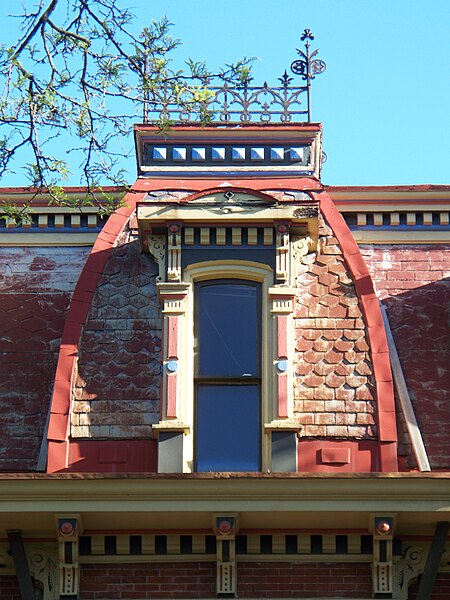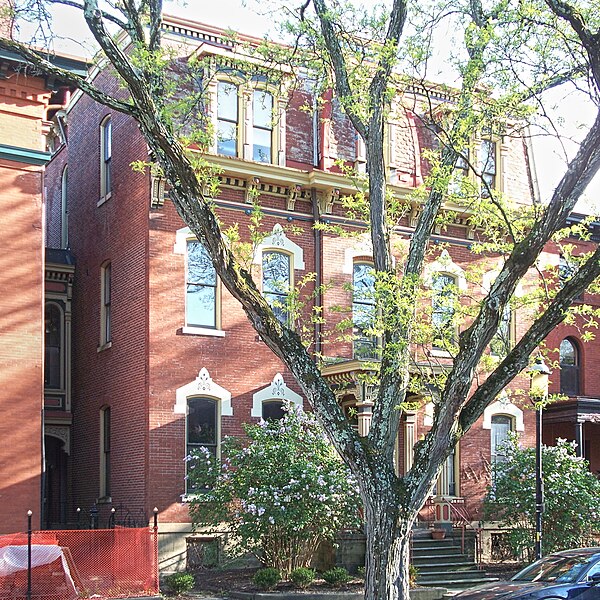
This charming Arts-and-Crafts Gothic church is the most distinguished building in the little hamlet of Imperial. It was built, according to the date stone, in 1911 for a congregation that had been founded in 1840, and the large cemetery behind the church has tombstones going back to that foundation.



The outstanding feature of the church is its belfry, with simple and massive woodwork that echoes the Gothic arches below, but also flares out into bell shapes, like a Sunday-school-supplement illustration of the bells within.



A postwar Sunday-school wing in the rear is built from nearly matching brick.





